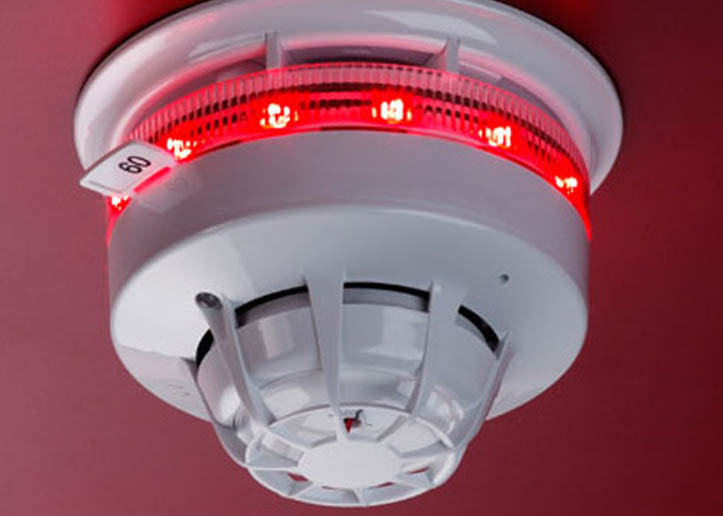Fire Alarm System
A Conventional Fire Alarm System normally consists of a control panel linked to a number of lines of fire detectors and manual call points, normally called detection zones, and a number of sounder or alarm circuits.
CONTROL PANEL
The Control Panel drives the detection zones and sounder circuits, provides LED indications of fire, fault or normal conditions and contains switches to allow the sounders to be activated or silenced and the detectors to reset following and alarm. The control panel is powered from the mains (230VAC) and will contain back-up batteries to allow the system to function for a minimum of 24 hours, dependent on the application, in case of main failure.
FIRE DETECTION AND ALARM ZONES
Most conventional fire alarm panels have several detection zones comprising a mixture of automatic fire detectors and manual call points. In order to limit the effect of faults, and to limit the search area in the case for fire, the size of fire detection zone is limited to 2000 m², with a maximum travel distance within the zone to locate a fire of 60m. In addition, zones should not cover more than one storey, unless the total floor area of the building is less than 300m². As a result unless the site is very small, the system will comprise several detection zones.
A fire alarm (or sounder) circuit may cover more than one detection zone, but it must follow the boundaries of the relevant detection zones, and the boundaries should be of fire resisting construction.
FIRE ALARM DEVICES:
- SMOKE DETECTOR
- HEAT DETECTOR
- MULTI SENSOR DETECTOR
- CONVENTIONAL PANELS
- STANDALONE DEVICES:
- SMOKE ALARM
- HEAT ALARM
FIRE SUPPRESSION SYSTEMS
Customer Gains : Gas Suppression is ideally suited in an area where other forms of firefighting may cause water damage to electrical goods.
Gain Creators : Minimise the amount of damage caused by smoke and soot the occurs as a by-product of the fire
Customer Pains : Fire occurs in electrical equipment, server rooms and data centres.
Pain Relievers : Fire suppression system will automatically extinguish a fire without the need of human intervention.
FIRE HYDRANT
Fire Hydrant – Access points that allow fire authorities to connect hoses and quickly extinguish flames.
Fire hydrant installation consists of a system of pipe work connected directly to the water supply main to provide water to each and every hydrant outlet and is intended to provide water for the firemen to fight a fire. The water is discharged into the fire engine form which it is then pumped and sprayed over fire. Where the water supply is not reliable or inadequate, hydrant pumps should be provided to pressurize the fire mains.



